
In the contemporary digital age, email marketing has evolved into an indispensable tool for businesses of all sizes, serving as a crucial means to connect with their audience, amplify brand awareness, and drive sales.
So, the burning question arises: “Which of the following will you need to start an email marketing programme?” Let’s unravel the essential components required to kickstart a successful email marketing initiative
So, let’s get started by understanding:
Understanding and Launching an Email Marketing Program: Key Components for Success
An Email Marketing Program is a strategic approach businesses employ to connect with their audience via email. It encompasses activities to promote products and services or engage with subscribers.
Key elements include list building, segmentation, content creation, and automation. Email marketing programs often begin with collecting an email list of interested recipients. This list is then segmented to send tailored messages to specific groups.
Content, such as newsletters, promotions, or informational updates, is crafted to engage and convert recipients. Automation tools schedule and track email campaigns, allowing for a data-driven approach to optimize results.
A well-executed email marketing program is a potent tool for building customer relationships, driving sales, and enhancing brand loyalty.
Let’s now understand the key component for launching an email marketing programme.
- Email List: The foundation of any email marketing program is a quality email list. Building a list of engaged and interested subscribers is crucial. You can collect email addresses through your website, social media, events, and other marketing channels. Ensure you obtain consent from individuals to send them emails, ensuring compliance with privacy laws like GDPR or CAN-SPAM Act.
- Email Marketing Software: You’ll need an email marketing platform or software to manage your campaigns. Platforms like MailChimp, Constant Contact, or HubSpot offer tools to design, send, and track your emails. They also provide features for list management, automation, and analytics.
- Compelling Content: High-quality content is essential to engage your subscribers. Develop valuable, relevant, and informative content that resonates with your audience’s interests and needs. Content can include blog posts, product updates, special offers, and more.
- Effective Design: A visually appealing and responsive email design is critical. Many email marketing platforms offer templates and design tools to create professional-looking emails. A well-designed email will enhance user experience and boost click-through rates.
- Automation: Automation tools allow you to send emails at the right time, such as welcome emails, birthday offers, or cart abandonment reminders. Automation helps maintain consistent communication and nurture leads.
- Analytics and Tracking: To assess the success of your email marketing program, you need access to detailed analytics. Key metrics include open rates, click-through rates, conversion rates, and unsubscribe rates. This data helps you make informed decisions and optimize your campaigns.
Which Of The Following Will You Need To Start An Email Marketing Programme?
To start an email marketing program, collect people’s email addresses. Here are some ways to do this:
Create an Engaging Website Sign-up Form: To kickstart an email marketing program successfully, you must begin by creating an engaging website sign-up form. This form should be prominently displayed on your website’s homepage and other pertinent pages.
The key is to make this form visually appealing and user-friendly, ensuring it captures visitors’ attention. Furthermore, the sign-up process should be streamlined and straightforward, allowing visitors to subscribe to your email list quickly.
A well-designed and accessible sign-up form is essential to initiate an effective email marketing campaign.
Offer Incentives: Encourage sign-ups by offering incentives such as discounts, free e-books, whitepapers, or exclusive access to content. People are more likely to provide their email addresses when they receive something valuable in return.
These incentives serve as a motivation for potential subscribers and can help build a responsive email list. They create a sense of value, trust, and anticipation, making your email marketing program more effective.
By offering incentives, you attract subscribers and establish a foundation for nurturing relationships and engaging with your audience through email campaigns.
Run Contests and Giveaways: run contests and giveaways. Hosting such events on your website or social media platforms can entice potential subscribers by requiring them to submit their email addresses for participation.
It’s essential to align the prizes with your target audience’s interests, ensuring relevance and engagement. This strategy helps grow your email list and fosters a connection with individuals genuinely interested in your offerings, increasing the chances of successful email marketing campaigns.
Utilize Social Media: By promoting your email sign-up form on your social media profiles, you can reach a broader audience and encourage user engagement.
Consistently sharing compelling content and updates will entice your followers to subscribe, offering them exclusive content and benefits through email. Integrating social media with email marketing enhances your reach and fosters a more engaged subscriber base, ultimately strengthening your email marketing strategy.
Host Webinars and Events: hosting webinars and events is crucial as they serve as valuable avenues for gathering email addresses. Hosting webinars and virtual events allows you to engage with your target audience and encourage them to register by sharing their email information.
By offering insightful content and interactive sessions, you can attract potential subscribers genuinely interested in your offerings.
These collected email addresses provide a foundation for building your email list, essential for executing successful email marketing campaigns and nurturing relationships with your audience. Hosting webinars and events can help you establish your brand’s authority and credibility, making subscribers more likely to engage with your emails.
Leverage Content Marketing: Creating high-quality blog posts, engaging videos, and compelling content is crucial to capture your target audience’s interest. This content strategically incorporates calls-to-action (CTAs) that encourage readers to subscribe to your email list.
This forms the foundation of your email marketing efforts by building a receptive audience interested in your content, products, or services. The quality and relevance of your content will play a pivotal role in nurturing and engaging your email subscribers.
Networking and Partnerships: By collaborating with businesses or influencers within your niche, you can tap into their existing audience, significantly expanding your reach.
These partnerships allow you to promote your email sign-up form to a broader and potentially more receptive audience. Leveraging their credibility and established relationships can help build trust with potential subscribers.
This cooperative approach fosters a mutually beneficial environment for reaching and engaging with your target audience, making it a key foundational element of any effective email marketing initiative.
Use Pop-up and Exit-Intent Forms: Employ pop-up and exit-intent forms on your website to capture email addresses. These forms are powerful tools for capturing valuable email addresses from your website visitors.
Pop-up forms can be strategically triggered to engage visitors when they are about to leave your site or have spent a predefined amount of time on it.
By integrating these forms into your website, you can build a robust subscriber list, enabling you to nurture and engage your audience through email campaigns, ultimately enhancing your marketing efforts and customer relationships. Utilizing a form builder with data analytics features is key to shaping your strategy according to the insights derived from the data you collect.
How Does The Email Marketing Programme Work?
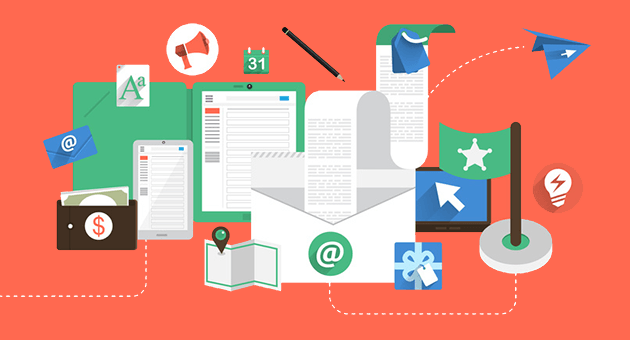
- Segmentation: Divide your email list into segments based on demographics, interests, purchase history, and more. This allows for more personalized and relevant content, leading to higher engagement.
- Content Creation: Craft compelling content tailored to each segment. Use storytelling, images, and calls to action to encourage subscribers to take the desired action.
- Testing: A/B testing involves sending different versions of an email to a subset of your list to determine which one performs better. You can test subject lines, content, and design elements.
- Sending Emails: Use an email marketing platform or service to send your emails. Popular email marketing tools include MailChimp, Constant Contact, and AWeber. These platforms provide templates, list management, and analytics.
Key Strategies
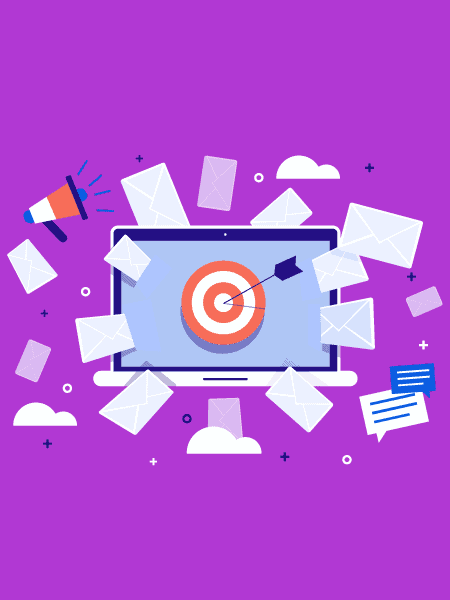
Personalization: You can significantly enhance engagement and conversion rates by customizing emails to align with each subscriber’s preferences and past behavior.
This entails segmenting your email list based on demographics, purchase history, and interactions with previous campaigns. Crafting personalized subject lines and content that resonates with individual recipients is essential.
Employing personalization behavior ensures that your emails feel more relevant and valuable to your audience, ultimately boosting the effectiveness of your email marketing efforts.
Segmentation: This involves dividing your email list into segments based on various criteria, such as demographics, interests, or purchase history. This strategy allows you to send highly personalized and relevant content to different groups of subscribers.
By tailoring your messages to specific segments. Effective segmentation helps ensure that your email marketing efforts are more targeted and ultimately more successful, leading to stronger relationships with your subscribers and improved campaign performance.
Automation: It allows you to streamline and personalize your communication with subscribers. By leveraging automation, you can send triggered emails responding to specific user actions, like abandoned shopping carts or post-purchase follow-ups.
This enhances efficiency and ensures that your emails are timely and relevant, increasing the likelihood of engagement and conversions. Automation helps you maintain consistent and strategic communication with your audience, ultimately driving better results in your email marketing efforts.
Testing and Optimization: it’s crucial to design a strategy for systematically testing different elements of your email campaigns, such as subject lines, content, and send times. You can refine your approach over time by analyzing the performance metrics and customer feedback.
This ongoing process helps improve the overall effectiveness of your email marketing efforts, leading to higher open rates, click-through rates, and, ultimately, better ROI.
Regularly assessing and fine-tuning your campaigns ensures they remain relevant and engaging for your target audience, fostering a stronger and more fruitful connection between your brand and subscribers.
Conclusion
Email marketing programs are powerful tools for businesses to connect with their audience, drive engagement, and boost sales.
To start an email marketing program, you need an email list, email marketing software, compelling content, practical design, automation, and analytics.
You can create successful email marketing campaigns that achieve your business goals by following key strategies like personalization, segmentation, and testing. Email marketing will remain a cornerstone of digital marketing as technology evolves, helping businesses build lasting customer relationships.


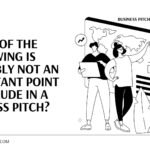

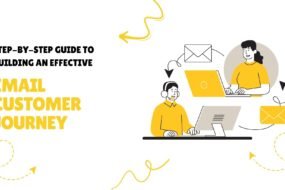
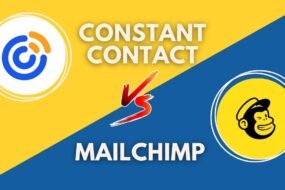

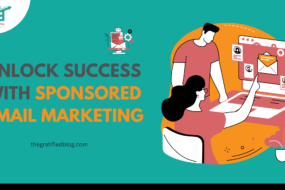
No Comments